
Amphibians Around Las Vegas, Wildlife Around Las Vegas
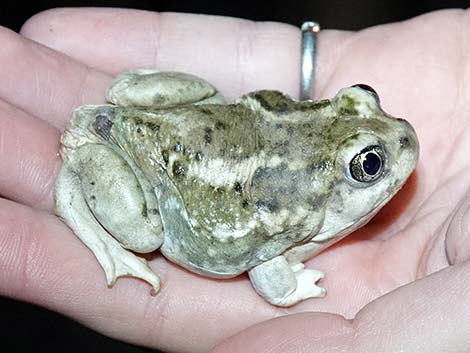 |
General Description: Great Basin Spadefoot Toads (Spea intermontana) are small, light-colored toads with a single horny scale (the spade) on the heal of each hind foot. The pupils are cat-like (vertical, not round), although when caught with a camera flash at night, the pupils are wide open and appear round. Other toad species have horizontal pupils. Color ranges from gray-brown to reddish-brown and green-brown, but they usually have light-colored stripes on the back that vaguely resemble an hourglass. Taxonomy: Order Frogs and Toads (Anura); Family Western Spadefoot Toads (Pelobatidae). Formerly Great Basin Spadefoot (Scaphiopus intermontanus). Technical Description: Body size to 2.5 in. Dorsal color ashy gray with small warts and small dark spots. Upper eyelid with a dark spot. Low, glandular boss between the eyes. Horny scale on the heel of the hind foot is wedge shaped, black. Pupils vertical (round at night). Teeth in upper jaw. Parotid glands absent. |
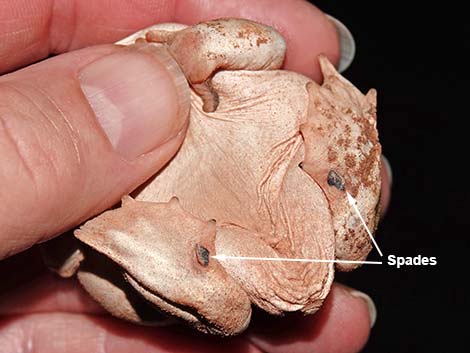 Spades: horny scale on heel of hind feet |
Diet: Insects. Habitat: Sagebrush flats to subalpine (Pine-Fir) forests at about 9,200 ft elevation. Range: The species occurs in the Great Basin Desert from southern-most British Columbia, eastern Washington, eastern Oregon, and the east edge of California east across the sagebrush deserts to southern Wyoming and western Colorado. Breeding: Breeds from spring to summer in temporary and permanent pools of water, often after spring and summer rains. Amplexis is pelvic. |
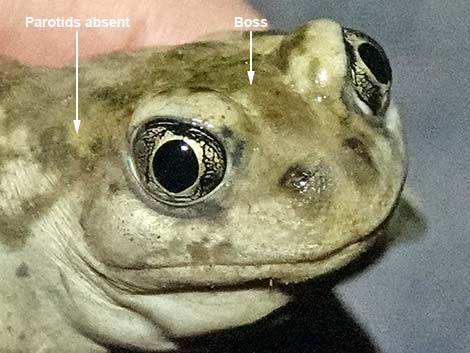 Low boss; parotids absent |
Similar Species: True toads (Genus Bufo) have horizontal pupils, two round brown tubercles on the hind feet, no teeth, and parotid glands. Comments: These toads use the spade on their foot to dig burrows (they dig backwards, squirming backwards into the soil) where they stay during dry weather. They remain in burrows at the bottom of dried up pools or washes during dry periods and emerge during heavy rain storms. They respond quickly to the sound of thunder during late-summer storms and breed in pools of water formed after rain or in slow-moving streams. |
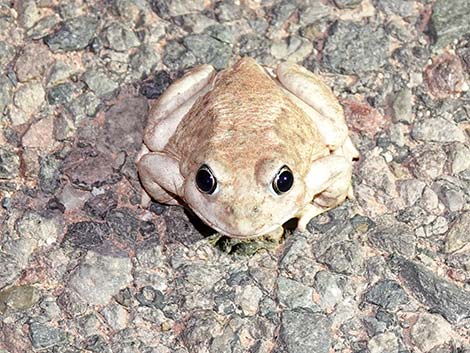 |
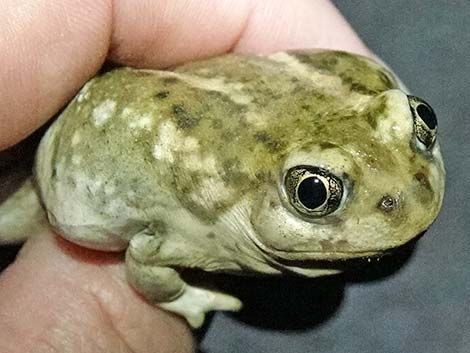 |
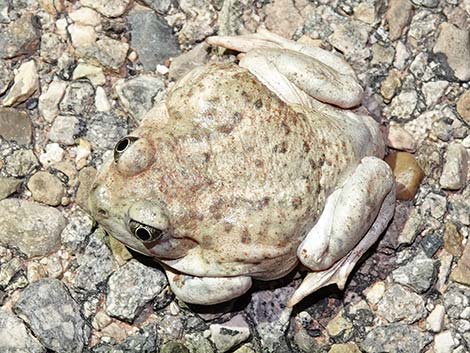 |
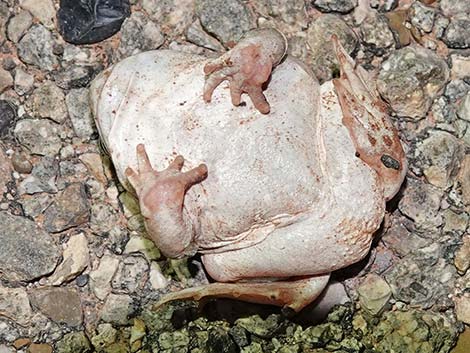 |
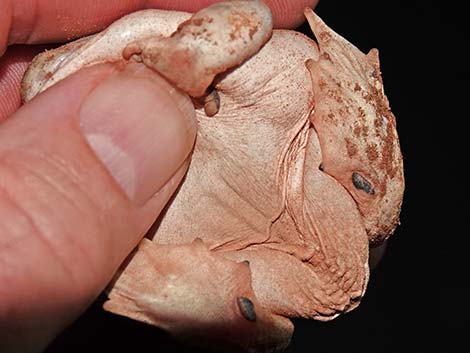 |
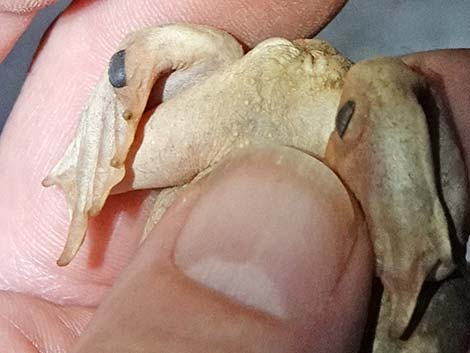 |
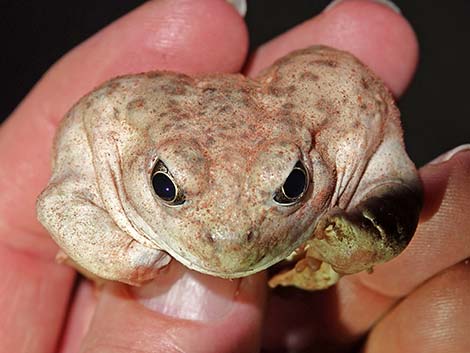 |
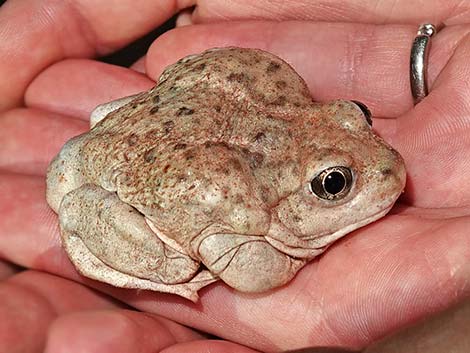 |
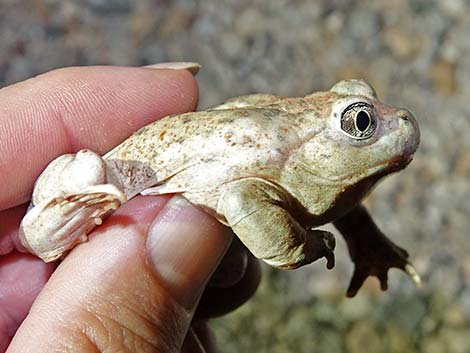 |
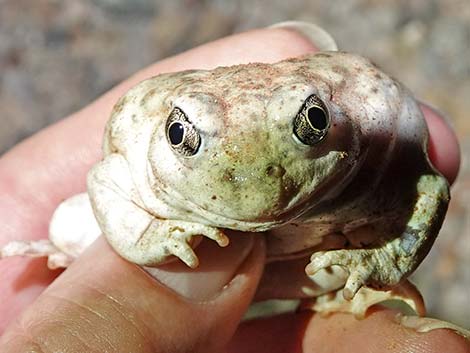 |
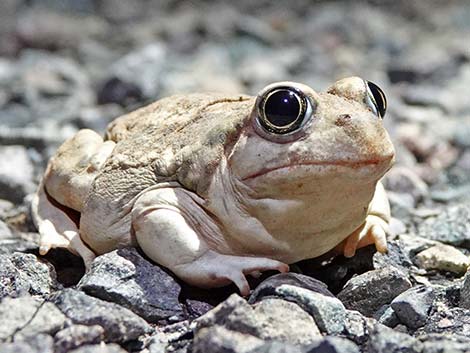 Big, round pupils when caught with a camera flash |
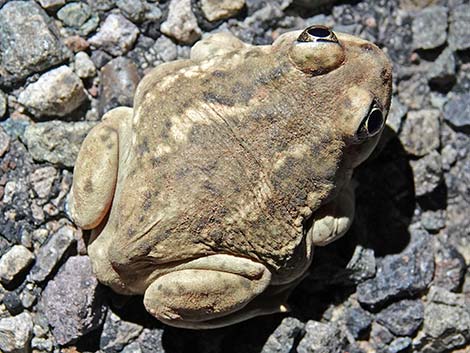 Note the pale hourglass pattern on the back |
Note: All distances, elevations, and other facts are approximate.
![]() ; Last updated 240309
; Last updated 240309
| Amphibians Around Las Vegas | Wildlife Around Las Vegas | Glossary | Copyright, Conditions, Disclaimer | Home |